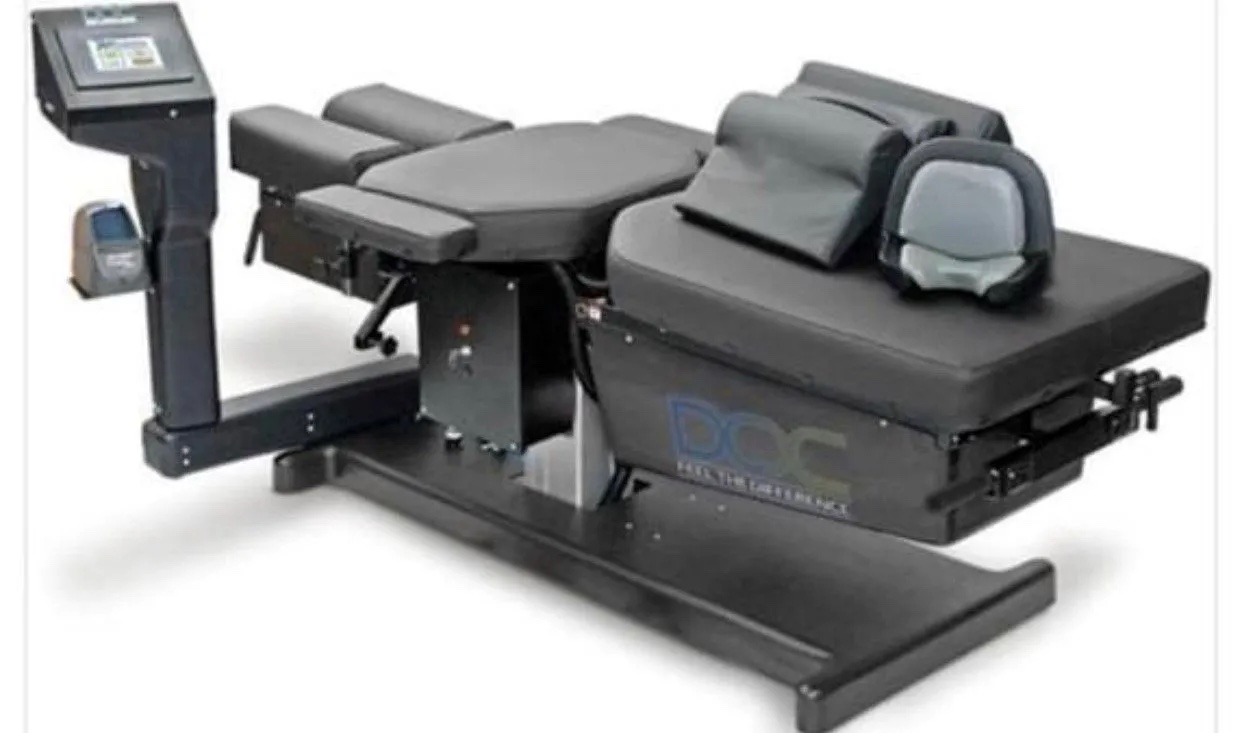Disc Decompression

How a Spinal Decompression Table Works
Spinal decompression tables use computerized technology to create negative intradiscal pressure in the spine. A decompression table has two parts which move independently of one another. During setup, a spinal decompression technician chooses a decompression program that is best suited to the patient’s needs. The right program for an individual will depend on that person’s diagnosis as well as how they have responded to previous treatments.
As the decompression table stretches the spine, negative pressure is created within the spinal discs, which can result in the retraction or repositioning of the disc material, leading to pain relief. In addition, the lower pressure within the disc can cause an influx of healing nutrients to the disc, to promote further relief even when the patient is not on the table.
One of the hurdles to effective decompression with manual techniques is the fact that the body naturally resists the stretch, known as muscle guarding. With a decompression table, sensors can detect when the patient’s muscles are guarding against the stretch and release the tension, ensuring that the maximum decompression is accomplished.
Spinal Decompression Protocol
The correct spinal decompression protocol for an individual will depend on the symptoms he or she is experiencing. Typically, spinal decompression patients can expect to go through at least 12 sessions on the decompression table, though depending on the patient’s diagnosis and response to the treatment, more sessions may be required. In addition, follow-up treatments may be prescribed as needed to manage pain.
A patient’s initial visit should determine whether he or she would be a good candidate for decompression therapy. If the patient is a good candidate, the doctor can put together a recommended decompression protocol designed for that specific patient and diagnosis.
Each spinal decompression table session is approximately 20 minutes in duration. During this session, the patient is strapped into the table using a pelvic harness. For lumbar decompression, the lower portion of the body will move to gently stretch and relax the spine based on computerized algorithms designed to maximize the stretch and minimize the body’s resistance to that stretch. For decompression of cervical herniated discs, the upper portion of the body will move.
Candidates for Spinal Decompression Therapy
Anyone suffering from back pain related to bulging or herniated discs may be a candidate for decompression therapy, but only a doctor of chiropractic or other healthcare practitioner specializing in the musculoskeletal system and trained as a decompression technician can make this determination upon assessing a patient. While many patients come to spinal decompression therapy after they have failed to find relief from other treatments, including surgery, this is not a prerequisite.
Spinal Decompression Therapy Results
As with any medical treatment, results for spinal decompression therapy will vary depending on the patient, the doctor, and the protocol used. Patients do not tend to feel a tremendous amount of relief after the first treatment. Instead, after several spinal decompression sessions, relief should be apparent. In some cases, patients may need to complete their entire treatment protocol before they feel complete relief from their symptoms.
